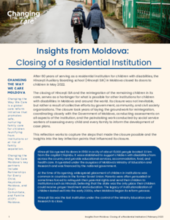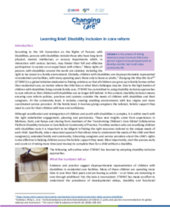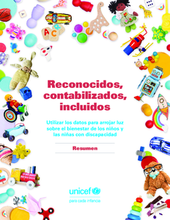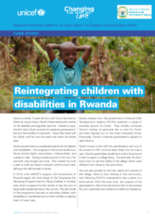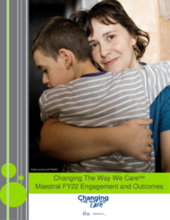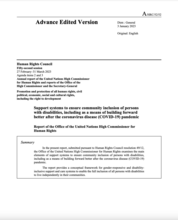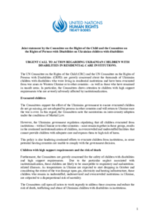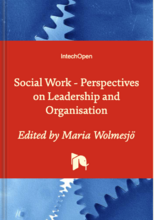Displaying 21 - 30 of 462
After 60 years of serving as a residential institution for children with disabilities, the Hîncești Auxiliary Boarding school (SIA Hîncești) in Moldova closed its doors to children in May 2022. The closing of Hîncești SIA serves as a harbinger for what is possible for other institutions for children with disabilities in Moldova and around the world.
This learning brief was developed as part of the CTWWC 2022 annual report and shares learning from Kenya and beyond. It is intended to help other practitioners understand how disability inclusion happens by sharing examples of practice.
El informe tiene como objetivo promover el uso de estos datos con el propósito de dar más protagonismo a los niños y niñas con discapacidad y de ese modo lograr una conciencia más plena de sus vivencias.
This case study documents the story of David's reintegration from a residential care home for children with disabilities in Rwanda to kinship care with his grandparents.
With a focus on 2022-23 themes of transition of care services, development of family-based alternative care, participation of people with lived experience and disability inclusion, this report details several of the significant outcomes and program activities achieved by the work of the CTWWC Maestral team over the last year.
The Office of the High Commissioner for Human Rights has published a new report following a request by the Human Rights Council on Support systems to ensure community inclusion of persons with disabilities, including as a means of building forward better after the coronavirus disease (COVID-19) pandemic.
This is an interview with Dragana Ciric Milovanovic, director of European Programs for Disability Rights International (DRI), during the European Launch of the Deinstitutionalization Guidelines, including in emergencies.
The government of Rwanda is in the final phases of its care reform program. Having reintegrated the majority of children from residential care back to families and communities, they are now working on the reintegration of children with disabilities. In this webinar, we hear from policymakers and practitioners on how this has been done and key lessons learned.
Joint statement by the Committee on the Rights of the Child and the Committee on the Rights of Persons with Disabilities on Ukrainian children with disabilities. They express concern about the thousands of Ukrainian children with disabilities who were living in residential institutions and have been evacuated from war zones to Western Ukraine or to other countries, as well as those who have remained in unsafe areas. In particular, they draw attention to children with high support requirements who are negatively affected by institutionalization.
While several interventions have been put in place to address the needs of persons with disabilities in developed countries, their counterparts in low-income countries, such as Ghana, continue to face marginalisation and exclusion. Using user-perspective and co-production approaches, this report analyses existing services for Ghanaians with disabilities and the relevance and usefulness of these services.

